Based on the existing evidence and scientific consensus, we
recommend 7 general guidelines for public policy on Non-Combusted
Nicotine Products (NCNPs):

Banning or severely restricting access, advertising, and use of Non-Combusted Nicotine Products (NCNPs) like vapes and heated tobacco carries serious public health consequences. Overly prohibitive regulations prevent these substantially safer alternatives from realizing their potential to save lives by transitioning smokers away from cigarettes. Instead of blanket bans or equating NCNPs to combustibles, regulations should adopt sensible frameworks based on scientific evidence. This harm reduction approach would enable NCNPs as cessation tools, establish quality standards, and limit youth access without denying adult smokers access to reduced risk options. Marketing, sales displays, clarifications, and differentiation should be permitted for NCNPs in both physical and online channels. Packaging and promotions should provide fact-based information, not discourage use. Finally, NCNP consumption should avoid blanket indoor/outdoor limitations, given the absence of sidestream emissions. Balanced regulations grounded in empirical evidence can maximize public health gains from NCNPs while addressing valid concerns.
Abandonment of the General Bans on Display, Advertising, Packaging and Use of Non-Combusted Nicotine Product
Caution on Nicotine Content Limitations
A mistaken perception exists that nicotine itself causes most smoking-related cancers. However, evidence shows nicotine actually carries minimal independent health risks. Therefore, public health communication should accurately convey the differential harms of vaping nicotine or using non-combustible nicotine products compared to smoking. The goal should be informing smokers to make evidence-based choices, not perpetuating misconceptions about nicotine. Likewise, limiting nicotine content can have unintended consequences per the “iron law of prohibition” - when a demanded product faces restrictions, market pressures intensify for more concentrated forms. There is ample historical evidence of this effect across different substance prohibitions. While regulations seek to discourage smoking, messaging must be precise on nicotine’s distinct effects from other tobacco toxins to enable smokers to switch to scientifically validated reduced harm alternatives through accurate understandings.

Eliminating Unjustified Flavor
Restrictions Based on Evidence
Rather than blanket flavor bans on vaping products and other non-combustible nicotine alternatives, regulations should take a nuanced, evidence-based approach to flavors. As leading researcher Dr. Konstantinos Farsalinos summarized, “Well-regulated use of flavors can and should be considered a valuable tool to help prevent disease and save the lives of adult smokers who are unable or unwilling to quit smoking on their own or with other approved methods.”
Statistics support these facts. As Shanon Gravely et al found, if flavors were completely banned, "Predicted behavioral responses were 28.8% would continue to vape some available flavor, 28.3% would find a way to get their banned flavor(s), 17.1% would stop vaping and smoke instead, 12.9% said they would stop vaping and not smoke, and 12.9% don't know what they would do." Similarly, Heather Posner et al determined "If sales of vape products were restricted to tobacco flavors, 39.1% of users [vapers under age 34] stated that they were likely to continue using e-cigarettes, but 33.2% were likely to switch to cigarettes."

In sum, the evidence indicates eliminating flavors risks significant public health harm by pushing vapers to more hazardous options. Regulations should enable, not prohibit, flavored alternatives to maximize switching from combustible cigarettes.

Promoting Non-Combusted Nicotine Products as an Evidence-Based Public Health Strategy
Rather than a blunt "quit or die" abstinence-only approach, public health leaders should adopt tobacco harm reduction strategies grounded in empirical evidence. This involves raising awareness and actively encouraging inveterate adult smokers - especially those unable to quit with conventional Nicotine Replacement Therapies (NRTs) - to transition to demonstrably less hazardous Non-Combusted Nicotine Products (NCNPs).
Messaging should highlight continued smoking as overwhelmingly the highest-risk nicotine source, contrasting the risk differential with NCNPs substantiated as 95 perccent safer. Public campaigns can steer smokers towards scientifically validated alternatives like vaping without conveying they are absolutely safe or aimed at youth non-smokers.
This pragmatic NCNP promotion grounded in facts over ideology or contraband fears represents the 21st-century's most promising avenue to accelerate smoking's decline. With compassion and care for all in the smoker's journey, public health authorities should embrace tobacco harm reduction as a lifesaving opportunity rather than continue "quit or die" absolutism.
Encouraging Innovation Through Smart Regulation of Non-Combusted Nicotine Products

Rather than prohibitionist restrictions, regulations on Non-Combusted Nicotine Products should balance product quality and safety with preserving access and innovation. Innovative legislation can establish controllable standards for manufacturing, distributing, and marketing these products while enabling the continued development of improved options.
For instance, stipulating FDA oversight of ingredient safety and enforcing age restrictions need not ban flavors or formats. Manufacturers can exercise product stewardship through monitoring health and environmental impacts across the product lifecycle. Standards can also promote device safety without restricting designs through excessive red tape.
The goal should be smart regulation that is sustainable for businesses yet focused on consumer welfare. Regulations risk unintentional public health consequences if excessive or driven by ideology over evidence.
Comprehensive Approach to Youth and Adults
Concerns exist about Non-Combusted Nicotine Products (NCNPs) impacts on youth. However, restrictions targeting youth should be weighed against the overall population's health benefits to avoid overreacting beyond evidence. Bans based on youth use risks lose sight of harm reduction potential for adult smokers.
Undoubtedly, no underage youth should use any nicotine product. Targeted marketing and sales to youth should be prohibited. But measures like flavor bans and retail restrictions based on youth use rationale disproportionately hurt adult smoking cessation efforts. Instead, a comprehensive framework should combine rigorous enforcement of age restrictions with commercial incentives promoting NCNPs for switching adult smokers. Messaging must also refute misconceptions of absolute safety. With a thorough approach considering all population impacts, NCNPs youth access can be limited without forfeiting harm reduction prospects.
Youth-focused NCNPs restrictions require balanced implementation based on empirical evidence, not generalizable anxieties.

Pursuing a Tax Policy that Incentivizes Switching to Non-Combusted Nicotine Products
Overall evidence suggests taxes on Non-Combusted Nicotine Products (NCNPs) like vaping may disproportionately reduce adoption by adult smokers seeking to quit cigarettes. Multiple studies have found high NCNPs taxes significantly increase the use of more dangerous combustibles instead. This indicates overly punitive NCNPs taxes may undermine public health aims.
Setting NCNPs tax rates well below combustible cigarettes can achieve the twin goals of keeping prices high for adolescents while still incentivizing adult smokers to switch through cost savings. Consequently, tax policies should incentivize the transition from smoking to scientifically substantiated reduced harm NCNPs. Lawmakers must avoid excessive NCNPs taxes that perversely protect cigarette revenues while discouraging smokers from quitting. Nuanced differential tax structures can align public health, youth protection, and adult consumer choice.








